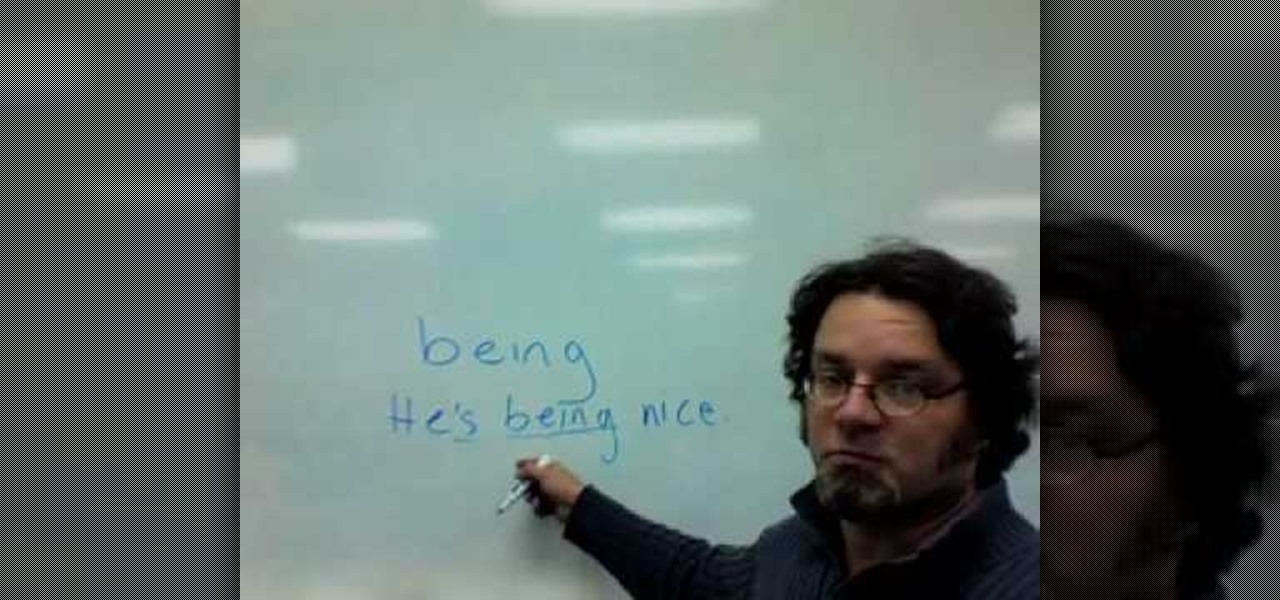Hot Language Posts


How To: Pronounce the letter "R" in English
A lot of the English you hear in the real world isn't taught in the classroom. This ESL how to video teaches you the pronunciation of the letter "R" in English. The letter "R" is not rolled in English like it is in many other languages. Watch this tutorial and you will be speaking English in no time.

How To: Pronounce past tense regular verbs in English
Learn how to pronounce regular verbs in English with this ESL tutorial. In English, the "ed" ending might be a "d" or a "t," depending on what comes before it. Watch this how to video and you'll be speaking English in no time.
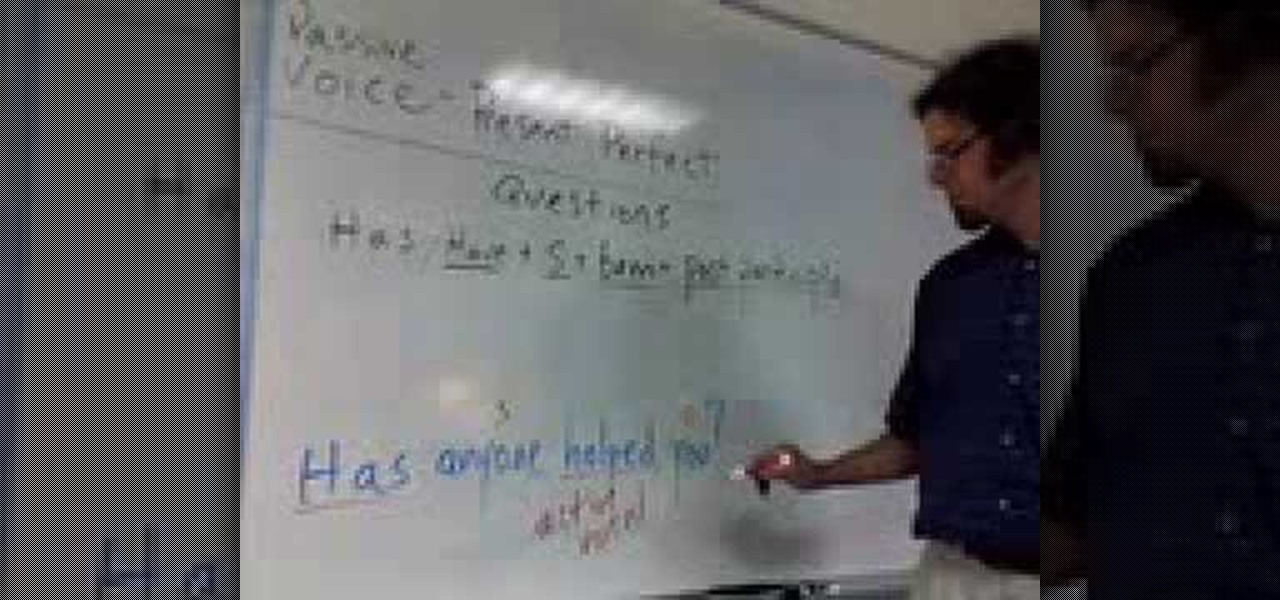
How To: Use English passive voice questions in present perfect
This ESL tutorial shows how to make yes-no questions in the passive voice in the present perfect tense. The passive voice un the present perfect tense uses have or has + subject + been + past participle. Watch this how to video and you'll be speaking English in no time.

How To: Use the English passive voice in the present perfect
In this ESL how to video, an American English teacher explains the how the present perfect tense works in the passive voice. In the English passive voice, S + has or have + been + past participle. Watch this how to video and you'll be speaking English in no time.
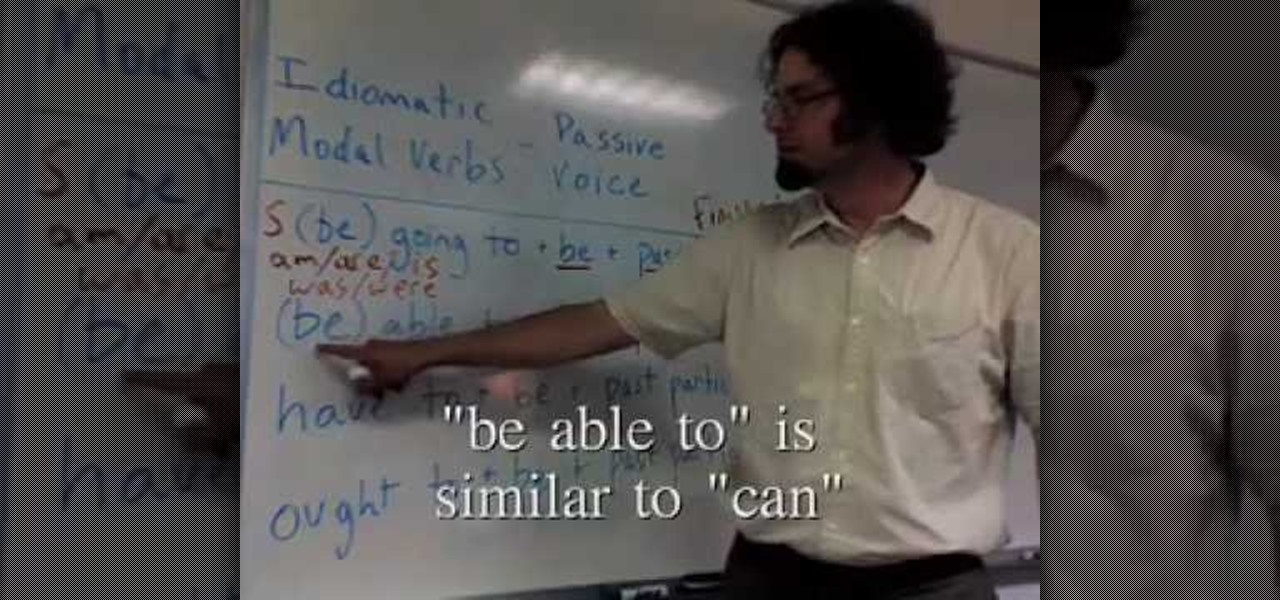
How To: Use English idiomatic modal verbs in the passive voice
In this ESL lesson, an American English teachers shows you how to use "be going to," "be able to," "have to," and "ought to" in the passive voice. These are examples of idiomatic modal verbs in the passive voice. Watch this how to video and you will be speaking English in no time.
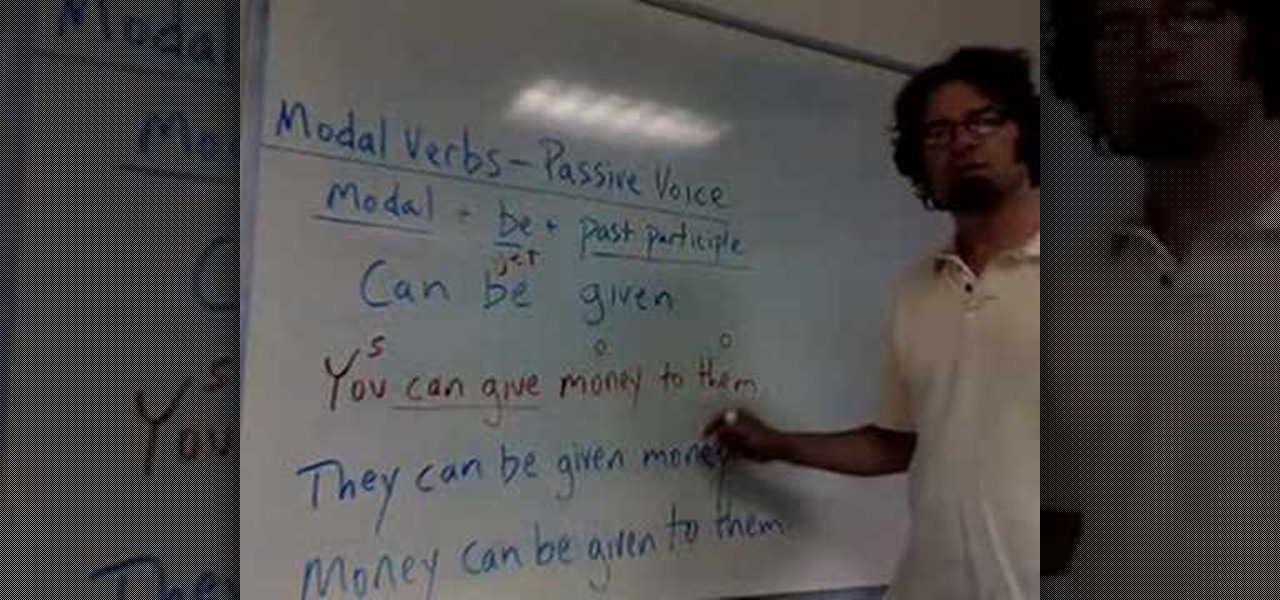
How To: Use modal verbs in the passive voice in English
Modal verbs in the passive voice follow this pattern: Modal + be + past participle. There are many possibilities with modal verbs. This ESL tutorial gives a basic description of how to use modal verbs in the passive voice. Watch this how to video and you will be speaking English properly in no time.

How To: Use the passive voice "supposed to" in English
In English, "supposed to" expresses obligation. Someone expects you to do something. It's an unusual form of the passive voice, but it's very important to learn. This ESL tutorial teaches you how to use "supposed to" in English. Watch this grammar how to video and you will be speaking English in no time.

How To: Use the passive voice in the future tense in English
Learn how you can use the passive voice in the future tense in this ESL tutorial. To make the future tense passive in English, use "will be" and then the past participle. "Will" is a modal verb, so this formula applies to other modals such as can, may, must, might, etc. Watch this how to video and you will be speaking English in no time.
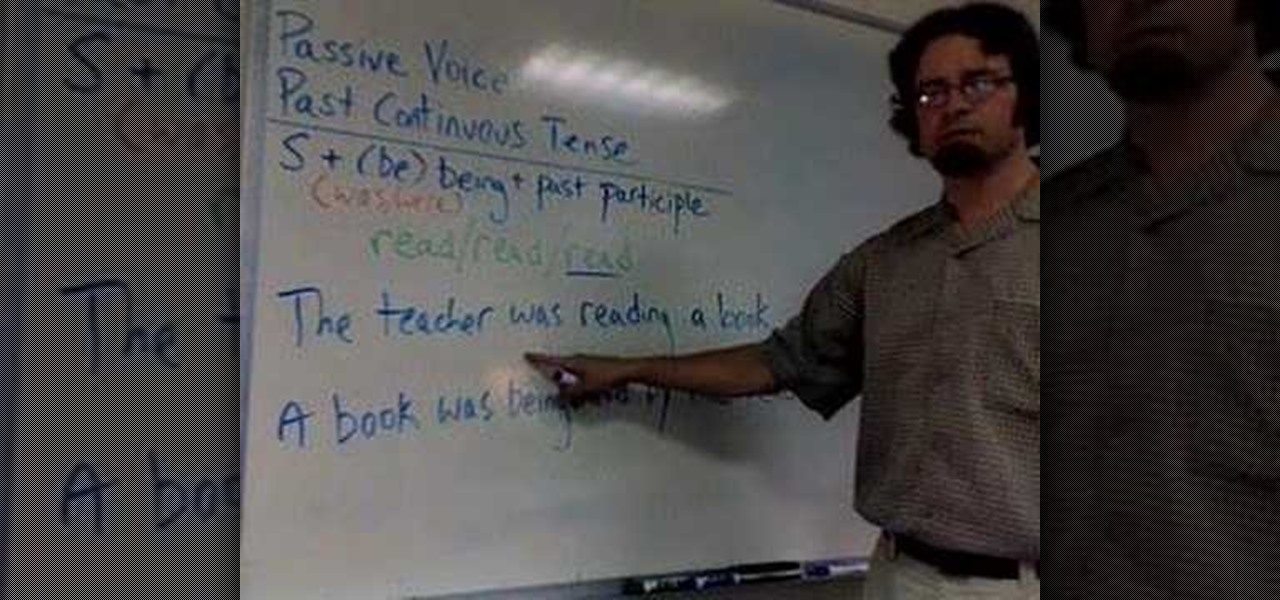
How To: Use the passive voice in past continuous in English
In this ESL tutorial you will learn how to use the passive voice in the past continuous tense in Englishi. The passive voice is the form of a transitive verb, that requires both a subject and one or more objects. To put the past continuous tense into the passive voice, use "was" or "were" depending on the subject, then "being" and then the past participle. Watch this grammar how to video and you will be speaking English in no time.

How To: Use the past tense passive voice in English
Learn how to use the English past tense passive voice in this how to video. The passive voice is the form of a transitive verb, that requires both a subject and one or more objects. To make the past tense passive, use "was" or "were," depending on the subject, and then add the past participle.

How To: Use the passive voice in present continuous in English
Learn how to use the English passive voice in the continuous tense in this tutorial. When the present continuous tense is in the passive voice it looks like this:

How To: Use the passive voice in the present tense in English
This ESL how to video teaches you the use of the passive voice in the passive tense in English. The passive voice is the form of a transitive verb, that requires both a subject and one or more objects. In the present tense, the subject changes the verb "be" and then you use the past participle of the main verb. Watch this tutorial and you will be speaking English in no time.

How To: Use the phrase "would rather" in English
"Would rather" is used to show a preference for one thing over another. What do you want to do today, go to the beach or go to work? I would rather go to the beach. Or, I'd rather go to the beach. In this ESL how to video you will learn the use of the phrase "would rather" in English. You will also learn how to construct the contraction of "would rather." Watch this how to video and you will be speaking English in no time.

How To: Use prepositions in biblical Greek
A preposition links together nouns, pronouns and phrases to other words in a sentence. This language tutorial, you will learn how to use prepositions in biblical Greek (Koine). This is a perfect lesson for the scholar looking to study the ancient language of Greece. Watch this how to video and you will be speaking the biblical Greek language in no time.
How To: Use the biblical Greek lexicon
The lexicon of a language is its vocabulary, including its words and expressions. In this language tutorial you will learn to use the biblical Greek (Koine) lexicon or dictionary. This is a perfect lesson for those who wish to study this ancient language. Listen and repeat the words in this language tutorial and you will be speaking biblical Greek in no time.

How To: Use present passive indicative tense in Koine Greek
In this language tutorial, you will learn to use the present passive indicative in biblical Greek (Koine). This is a perfect lesson for those who wish to study this ancient language. Listen and repeat the words in this language tutorial and you will be speaking biblical Greek in no time.

How To: Use the vocative form in biblical Greek
In this language tutorial, you will learn how to use the vocative case in biblical Greek (Koine). The vocative case is the case used for a noun identifying the oblect being addressed. This is a perfect lesson for those who wish to study this ancient language. Listen and repeat the words in this language tutorial and you will be speaking biblical Greek in no time.

How To: Use masculine singular & plural nouns in Koine Greek
In this language tutorial, you will learn how to determine whether a nouns is dative, locative, instrumental, masculine, singular and plural in biblical, Koine Greek. This lesson is excellent for scholars wanting to study this ancient language of Greece. Watch this how to video and you will be speaking biblical Greek in no time.

How To: Use the nominative or accusative plural in Koine Greek
In this language tutorial, you will learn how to nominative masculine plural and accusative masculine plural forms in biblical Greek (Koine). This lesson is excellent for scholars wanting to study this ancient language of Greece. Watch this how to video and you will be speaking biblical Greek in no time.

How To: Use present middle indicative form in biblical Greek
In this language tutorial, you will learn how to use the present middle indicative form biblical Greek (Koine). The Greek middle expesses the subject as participating in the action. This is a perfect lesson for the scholar looking to study the ancient language of Greece. Watch this how to video and you will be speaking the biblical Greek language in no time.

How To: Use the definite article in biblical Greek
In this language tutorial, you will learn how to use the definite article in biblical Greek (Koine). This is a perfect lesson for those scholars wishing to study this ancient language of Greece. Watch this how to video and you will be speaking biblical Greek in no time.

How To: Use the movable NU in biblical Greek
In this how to video, you will be introduced to the concept of a movable NU in Greek as well as have the Greek accent marks summarized. The movable NU is used at the end of Greek texts in the present active indicative third person plural form. The movable NU is comparable to the English article "a" or "an". This lesson in perfect for those who wish to study this ancient language of Greece. Watch this language tutorial and you will be speaking biblical Greek in no time.

How To: Pronounce basic vocabulary words in biblical Greek
In this how to video, you will learn how to pronounce and memorize your first biblical Greek (Koine) vocabulary words. This is a perfect lesson for those who wish to study this ancient language. Listen and repeat the words in this language tutorial and you will be speaking biblical Greek in no time.

How To: Pronounce the biblical Greek alphabet
In this 6 part language tutorial, you will learn how to pronounce and write the biblical (Koine) Greek alphabet. The biblical Greek alphabet is a set of 24 characters. This is an excellent lesson for those who wish to be scholars in this ancient language.

How To: Use personal pronouns in biblical Greek
In this language tutorial you will learn how to use personal pronouns in biblical Greek (Koine). This is a perfect lesson for the scholar looking to study the ancient language of Greece. Watch this how to video and you will be speaking the biblical Greek language in no time.

How To: Say "Happy New Year" in Mandarin Chinese
Learn how you can say "Happy New Year" in Mandarin Chinese with this language lesson. This is a great phrase to know how to say when celebrating the Chinese New Year. Listen and repeat this phrase to greet them in Mandarin Chinese during the New Year.

How To: Say the numbers 1-5 in Mandarin Chinese
In this language tutorial teaches how to say numbers one through five in Mandarin Chinese. This lesson is perfect for children or beginners learning Mandarin Chinese.

How To: Thank someone in Mandarin Chinese
This language lesson teaches you how to pay someone a compliment or thank someone in Mandarin Chinese. This how to video covers the following Mandarin Chinese phrases:

How To: Say "Happy Birthday" in Mandarin Chinese
Learn how to wish someone a happy birthday, holidays, Christmas, or New Year in Mandarin Chinese with this language tutorial. This video is great for beginning Mandarin Chinese students or someone visiting China.

How To: Say traditional Chinese wedding blessing in Mandarin
This language tutorial teaches one way to say a traditional Chinese wedding blessing in Mandarin Chinese:

How To: Sing "Twinkle Twinkle Little Star" in Mandarin Chinese
Learn how to sing this simple children's song, "Twinkle Twinkle Little Star" in Mandarin Chinese with this language tutorial. This is a fun lesson for someone who is learning Mandarin Chinese.

How To: Say words of greetings in Mandarin Chinese
Learn how you can say common greetings in Mandarin Chinese. This language lesson covers how to say "hello", "how are you", "good morning", "good night", "have you eaten yet", and "good bye" in Mandarin Chinese. This is a great lesson for beginner Mandarin students or someone who is visiting China.

How To: Read and write in Arabic
This language tutorial teaches you how to read and write in Arabic. You should already know the Arabic alphabet before attempting to read and write Arabic. This video is for beginning Arabic students.

How To: Ask about feelings in Mandarin Chinese
Learn how to ask how someone is feeling and how to respond to them in Mandarin Chinese, with this language tutorial. This video lesson teaches you to ask someone if they are hungry, thirsty, tired, or hurt in Mandarin Chinese.

How To: Apologize to someone in Mandarin Chinese
Apologizing is one of the most important things to know how to do, in any language. This language lesson teaches you how to apologize and make-up in Mandarin Chinese. This lesson teaches you apologetic phrases that you should use in English and in Mandarin Chinese.

How To: Tell time in Mandarin Chinese
This language tutorial teaches you how to tell time in Mandarin Chinese. Learn the phrases for the time of day and how to integrate them with the numbers for time. Watch this video lesson and you will be telling time in Mandarin Chinese in no time.

How To: Ask someone out in Mandarin Chinese
Got your eye on a special someone and want to impress him / her? Ask them out in Mandarin Chinese. This language lesson teaches you how to ask someone out on a date in Mandarin Chinese.

How To: Compliment someone in Mandarin Chinese
Everyone likes to be complimented. This tutorial teaches you compliments and terms of endearment in Mandarin Chinese. In this how to video you will learn how to say the following Mandarin Chinese phrases:

How To: Say useful Mandarin phrases in a Chinese restaurant
In this Mandarin Chinese lesson you will learn how to say common phrases used in a Chinese restaurant. This is a great video if you want to impress your table by speaking Mandarin Chinese with your waiter. Follow these instructions and you'll be able to say "I want a glass of beer" in Mandarin by the end of the video.

How To: Say "I love you" in Mandarin Chinese
This Mandarin Chinese lesson introduces a few simple and useful Chinese phrases for Valentine's Day. Learn how to express your love in Mandarin Chinese with this easy to follow tutorial.





